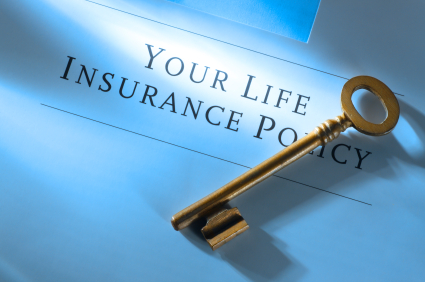7 Issues to Consider When Determining Life Insurance Coverage
The type of insurance policy you decide to purchase and how coverage can conveniently suit your needs is very essential especially once you have decided to obtain life insurance. Below are some important issues to consider:
#1. Time Frame for the Coverage
Permanent life insurance is appropriate when you have a specific period of time which you want the coverage to last. Term policies can be purchased with guaranteed level premiums for as long as 20 years but once it ends, the premium can become very expensive. For coverage that can last up to 30 years of your entire life, a permanent insurance is the sure bet.
Also, buy a combination of policies because the need for coverage trends to decrease over time. For instance, if you need $1 million in total coverage you can buy a $250,000 10-year, a $250,000 20-year and a $500,000 of 30-year term policies. You can decrease the face amount on the 30-year policy or allow it to lapse if you realize you need less coverage than expected. However, if things don’t pan out the way they should, a term policy with a conversion option would have guaranteed you as much coverage as necessary.
#2. Disability Waiver of Premium
A disability waiver of premium to a life insurance policy is one way to get limited coverage, although it’s quite expensive. Prior to obtaining a disability waiver:
- If you do not have long-term disability insurance, buy an individual policy if available.
- If you do not have group/individual coverage, evaluate the after-tax income you would be expected to receive. If it is not sufficient to meet your needs, check your eligibility for purchase of any additional individual coverage. Also, consider the risks if you change or lose your job and the disability benefit.
Disability riders vary by insurer and policy, so it is important to understand the benefits you will receive and how it will affect the coverage. Some waivers cover only the insurance cost while others replace the entire premium, thus allowing the cash value in a permanent policy to keep growing.
#3. Buying a Policy That Builds Cash Value
Most individuals buy life insurance mainly for the leverage. They want to pay a small price for premium to earn a large death benefit. Unless you really need permanent coverage like estate planning or funding a special needs trust, it’s only wise to buy a term policy with a conversion rider and fully fund your retirement plan and IRA (Individual Retirement Accounts) options. Then, if the cash flow is available and you’re ready to commit the funds for a long period of time, then obtaining a permanent life insurance policy is in order.
#4. Guaranteed Policy
No lapse universal life, only term and some whole-life policies have guaranteed premiums and death benefits. The premium is based on certain assumptions that include an assumed rate of return for other permanent policies. This implies that you, the policy owner accepts the investment risk and you would be required to pay a higher premium if the policy fails.
#5. Mode of Ownership of the Policy
The death benefit would be included in your gross taxable estate if you own a life insurance policy or if your revocable trust has one. If your estate is less than $5,450,000 in 2016, you might not owe any federal estate taxes. However some states levy taxes on estates valued at $1 million dollars or less. If you reside in such a state, you should consider joint ownership of the policy with your spouse or obtain an irrevocable life insurance trust (ILIT). Also, it is important to note that policies you own are transferred to an ILIT and subject to a three-year lookback rule.
#6. Health Issues and Rating
If the insurer offers a policy with rating when you apply for insurance, work with an insurance broker to shop the coverage among several companies because the insurers rate medical issues differently. Consider purchasing a permanent life insurance policy if you previously applied for term. Many companies offer a table shaving program, in which you can be moved up for a Table 3 to Table 1 rating, which can reduce the cost of insurance a great deal.
Permanent policies allow you to pick a level or increasing death benefit unlike term life insurance policies that offer only a level death benefit. For instance, a $250,000 policy with a $20,000 cash value and a level death benefit would amount to $230,000 of insurance, since the death benefit will include your $20,000. An increasing death benefit would translate to more insurance, so the payment would be $270,000 ($250,000 plus $20,000). Many policies enable you to switch between the level and increasing option so you can adjust you coverage to suit your needs. In addition both permanent and term policies allow you to reduce the face amount of coverage without underwriting, within limits. Once a policy has been issued, to increase coverage usually needs underwriting.
Conclusion
Consult with your insurance broker about different polices and design options so that the life insurance coverage can be tailored to suit your financial capacity.





